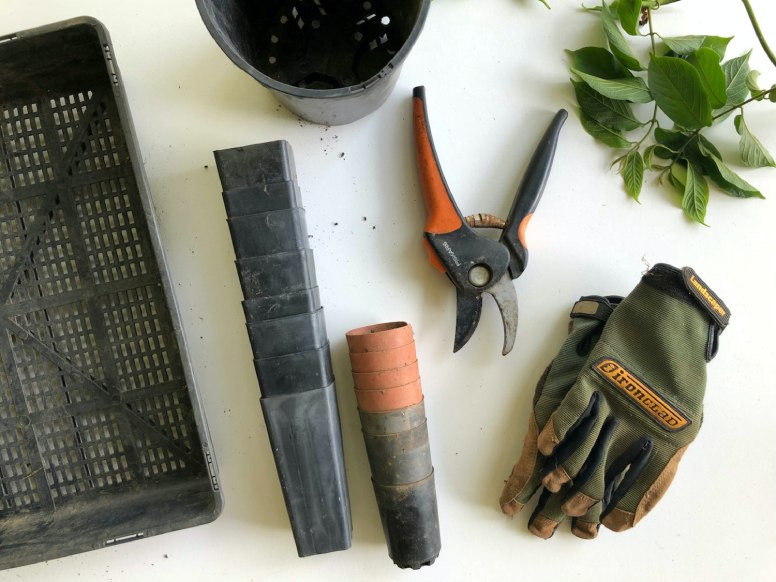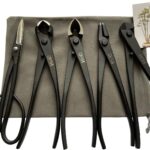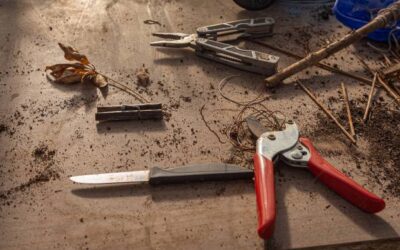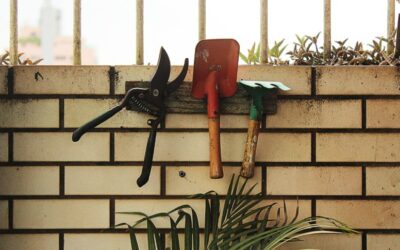In this article, you will learn about taking care of bonsai tools, which are a subsection of Japanese garden tools. Bonsai tools are essential for the proper maintenance and shaping of bonsai trees, and it is important to keep them clean and in good condition to ensure their longevity. By following simple steps and best practices, you can keep your bonsai tools in top shape and enjoy the art of bonsai gardening for years to come.
To take care of your bonsai tools, start by cleaning them after each use. Use a soft cloth or brush to remove any dirt, sap, or debris from the tools. Make sure to dry them thoroughly after cleaning to prevent rusting. It is also important to regularly oil your bonsai tools to keep them lubricated and prevent them from sticking or seizing up. Additionally, store your tools in a dry and clean location to protect them from moisture and damage. By following these care tips, you can ensure that your bonsai tools are always ready for use and will last a long time.

Introduction
Bonsai tools play a crucial role in the art of bonsai cultivation, allowing enthusiasts to shape and maintain these miniature trees with precision and care. In this article, we will explore the different types of bonsai tools, the importance of taking care of them, cleaning and maintenance techniques, storing tips, handling suggestions, common mistakes to avoid, and where to buy these essential tools. By properly caring for your bonsai tools, you can ensure their longevity and enhance your overall bonsai experience.
Types of Bonsai Tools
Pruning Tools
Pruning is one of the essential tasks in bonsai care and involves trimming unwanted branches and foliage to maintain the desired shape and size of the tree. Pruning tools include bonsai shears, knob cutters, branch cutters, and concave cutters. Bonsai shears are used for general pruning, while knob cutters are perfect for removing large knobs or bumps on the trunk. Branch cutters allow for precise removal of branches, while concave cutters create concave cuts that promote healing and prevent bulging.
Trimming Tools
Trimming tools are used for finer detailing and refining the shape of the bonsai tree. These tools include leaf trimmers, bud scissors, and pruning scissors. Leaf trimmers are used to remove excess foliage, while bud scissors and pruning scissors are ideal for delicate pruning tasks and cutting small branches.
Root Management Tools
Root management is essential to ensure the health and growth of bonsai trees. Root pruning tools, like root scissors and root hooks, are used to trim and shape the roots during repotting or root pruning. Root rake tools help in untangling and combing out the roots while maintaining their delicate structure.
Wiring Tools
Wiring is an integral part of bonsai cultivation, allowing enthusiasts to shape and bend branches to conform to the desired artistic vision. Wiring tools include bonsai wire cutters, which are specifically designed to cut through the wire without damaging the tree, and wire pliers, which are used to twist and secure the wire in place.
Watering Tools
Proper watering is crucial for the health of bonsai trees. Watering cans with fine nozzles are commonly used to ensure even distribution of water, preventing over or under-watering. Additionally, moisture meters can be used to measure the moisture levels in the soil, helping bonsai enthusiasts determine the optimal watering schedule.
Importance of Taking Care of Bonsai Tools
Enhances Tool Longevity
Taking proper care of your bonsai tools ensures their longevity and extends their usefulness. Regular cleaning, sharpening, and maintenance prevent rust and corrosion, helping your tools stay in excellent condition for years to come. Additionally, storing your tools properly and protecting them from moisture and the elements further enhances their lifespan.
Ensures Better Tree Health
Well-maintained tools contribute to the overall health of your bonsai trees. Sharp pruning and trimming tools result in clean cuts, minimizing stress on the tree and reducing the risk of infections or diseases. Clean and disinfected tools also prevent cross-contamination between trees, preventing the spread of pests or pathogens.
Promotes Efficient Bonsai Care
By keeping your bonsai tools in good condition, you ensure their optimal performance. Sharp pruning shears and cutters make precise cuts, minimizing damage to the tree and promoting faster healing. Well-adjusted wiring tools allow for easier bending and shaping of branches, creating the desired bonsai form. Efficient watering tools ensure even distribution of water, preventing soil erosion or waterlogging.
Cleaning and Maintenance Techniques
Cleaning and Sterilizing Tools
After each use, it is important to clean your bonsai tools to remove any sap, debris, or soil residue. Use a cloth or brush to wipe off any visible dirt, and if necessary, rinse the tools with water. To prevent the spread of diseases and pests, it is essential to sterilize your tools. Wiping them down with a disinfectant solution or dipping them in a sterilizing solution, such as a diluted bleach solution or rubbing alcohol, can effectively kill any bacteria or fungi.
Removing Rust and Stains
Rust can develop on bonsai tools, especially if they are not adequately dried after cleaning. To remove rust, use a wire brush or abrasive pad to scrub the affected areas. You can also apply a rust remover solution and gently rub it in with a cloth or brush. Stains can be removed by soaking the tools in a mixture of warm water and mild detergent, followed by a thorough rinse and drying.
Sharpening and Adjusting Tools
Regularly sharpening your bonsai tools ensures clean and precise cuts, reducing stress on the tree. Use a sharpening stone or a honing guide to sharpen the blades of your pruning and trimming tools. Additionally, check the alignment and adjust the tension of your tools, such as the wire cutters or shears, to maintain their optimal functionality.

Storing Bonsai Tools
Choosing the Right Toolbox
Choose a toolbox that is spacious enough to accommodate all your bonsai tools without overcrowding. Opt for a sturdy toolbox made of durable materials to protect your tools from accidental damage. Look for a toolbox with compartments or dividers to keep your tools organized and prevent them from bumping into each other.
Organizing Tools Properly
To keep your bonsai tools organized, assign specific compartments or sections in your toolbox for each type of tool. Arrange them according to their size and shape, ensuring that they fit well and are easily accessible. Avoid throwing your tools haphazardly into the toolbox, as this can cause damage and make it challenging to find the right tool when needed.
Protecting Tools from Moisture and Elements
Moisture and exposure to the elements can cause rust and corrosion in your bonsai tools. To protect them, make sure they are completely dry before storing them in the toolbox. Consider using rust-inhibiting paper or silica gel packs to absorb any moisture. If possible, store the toolbox in a dry and well-ventilated area, away from direct sunlight or extreme temperature fluctuations.
Tips for Handling Bonsai Tools
Wearing Safety Gloves
When working with bonsai tools, it is advisable to wear safety gloves to protect your hands from cuts or injuries. Choose gloves that fit well and allow for dexterity, ensuring you can handle the tools with precision while keeping your hands safe.
Proper Tool Handling Techniques
Familiarize yourself with the proper handling techniques for each bonsai tool. Learn how to grip them securely and use them according to their intended purpose. Avoid applying excessive force or using them in ways they are not designed for, as this can lead to tool damage or accidents.
Using Tools for Their Intended Purpose
Each bonsai tool is designed for a specific purpose, and using them correctly is important for both the tool’s longevity and the health of your bonsai trees. Do not use pruning shears as wire cutters, or wire pliers as pruning scissors. Using the wrong tool for a task can result in poor results and potential damage to the tools or the tree.
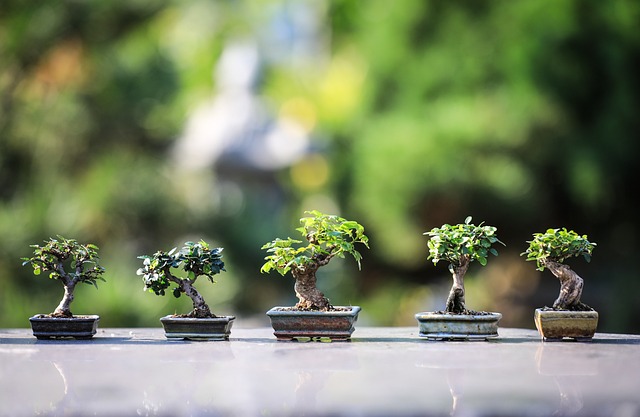
Common Mistakes in Bonsai Tool Care
Neglecting Cleaning and Maintenance
One common mistake in bonsai tool care is neglecting regular cleaning and maintenance. Failing to clean your tools after each use can result in sap buildup, rust, and contamination. Similarly, neglecting maintenance tasks such as sharpening or adjusting the tools can lead to dull blades and inefficient performance.
Storing Tools Improperly
Improper storage of bonsai tools can contribute to their premature wear and tear. Tossing tools into a toolbox without proper organization or protection exposes them to unnecessary friction, potential breakage, and rust. Storing tools in a damp or humid environment further increases the risk of rust and corrosion.
Where to Buy Bonsai Tools
Specialty Bonsai Stores
Specialty bonsai stores are an excellent option for purchasing high-quality bonsai tools. These stores often offer a wide range of tools specific to bonsai cultivation and care. Knowledgeable staff can help you choose the right tools based on your skill level and specific needs.
Online Bonsai Suppliers
The internet provides a convenient platform for purchasing bonsai tools from online suppliers. Many reputable websites offer a vast selection of bonsai tools, making it easy to compare prices and read customer reviews. When purchasing online, ensure that the supplier has a good reputation and guarantees the quality of their products.

Conclusion
Properly caring for your bonsai tools is crucial for both their longevity and the success of your bonsai cultivation. By investing time and effort into cleaning, maintaining, and storing your tools correctly, you enhance their lifespan and performance. Taking care of your bonsai tools not only ensures better tree health but also allows you to fully enjoy the art of bonsai with well-maintained tools. So, remember to clean, sterilize, sharpen, and store your bonsai tools properly, and let your creativity blossom in the world of bonsai cultivation.

